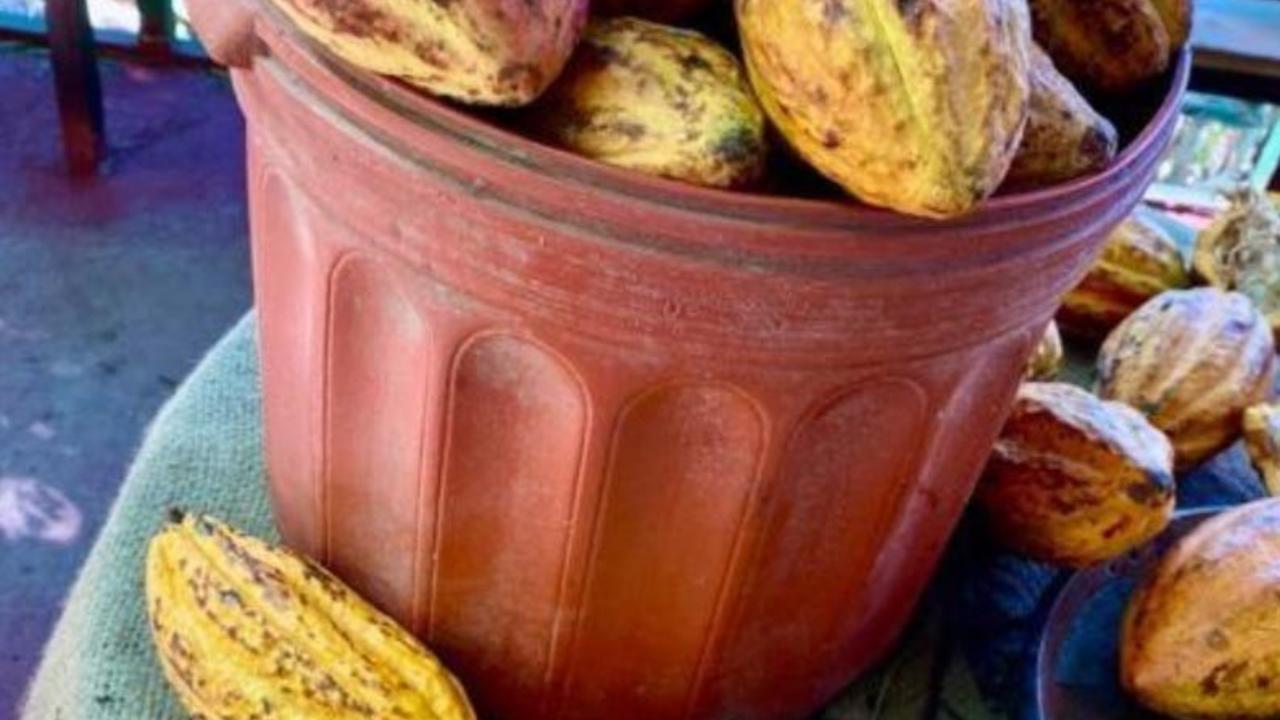The Food of Love
Feb 10, 2020
Life is like a box of chocolates, you never know what you’re going to get.
-Forrest Gump
Chocolate is the food of love. Delicious, decedent and divine. Do you know that almost 60 million pounds of chocolate are purchased for Valentine’s day? How much of that will you be eating or giving?


I recently visited Don Juan Coffee and Chocolate Farm in Costa Rica. I even got to meet Don Juan himself! His farm is open to the public and offers tours and information about how chocolate, coffee and sugarcane gets from the plant to your plate. Monteverde, Costa Rica offers the perfect climate to produce these three crops. I learned a lot about both coffee and chocolate and it was fun to see first-hand how my morning joe and my favorite dessert gets to my kitchen.
History of Chocolate
Cacao pods grow in a variety of colors from purple to bright green to crimson. Cacao trees favor hot, rainy environments and grow best within 20° of the equator.
Cacao Pods
To peel or not? My personal preference is peel larger eggplants and to not peel smaller sized eggplant. It does boil down to a personal preference. There are a lot of nutrients in the skin.
Whether or not you plan to peel your aubergine, larger varieties should be salted. This helps to remove any potential bitterness and it helps the eggplant to soak up less oil. To do this slice or dice your aubergine for your recipe. Place in a colander and salt generously. Let sit for at least 15 minutes. You will see the eggplant start to weep (get a little watery). Wash the salt off and you are now ready to use in your recipe.


Inside each pod are cacao beans. An average pod contains 40-50 beans; it takes about 400 beans to make one pound of chocolate. Each bean is covered with a sweet lemonade-ish tasting mucus. You can eat this mucus! It is really good and does not taste like chocolate at all! It has a sweet tangy taste. You suck on it like candy, removing the pulpy mucus from the bean, and then, spit the bean out. The bean itself is very bitter and should not be eaten. Trust me on this! I ate the wrong part the first time. I misunderstood and thought you ate the bean! It is bitter, has a bark-like texture and gets stuck in your teeth; it nearly gagged me!



So, How Do You Get Chocolate?
Chocolate is made from fermenting the beans. Sometimes this is done in pineapple juice! The fermentation process is what allows the beans to develop flavor. Then, it is dried, ground and pounded. The shell is removed to produce cacao nibs; from this chocolate liquid is created. From this comes two products – cacao (solid) and cacao butter.
Cacao butter is used in a variety of personal care products such as face creams and lotions, as well as producing edible products like white chocolate.
Baking chocolate is a combination of the cacao solid and cacao butter; generally no added sugar. Most forms of chocolate today are sold with added ingredients such as vegetable oil, sugar and milk products.
The word chocolate actually comes from cacao (choco) and milk (latte). True chocolate, cacao, does not contain milk.
This process is labor intensive. This is why pure, fair trade chocolate is expensive! Many varieties of chocolate on the market contain other ‘filler’ ingredients. Look for 70%+ cacao for good quality. Not all chocolate is alike and not all chocolate is plant-based. Make sure you read the label.
Consider purchasing chocolate from fair trade companies. This means that they: pay fair wages to their employees; do not employ child laborers; farm with sustainable and eco-friendly practices and are GMO free. Look for a fair trade label on the chocolate you purchase.
Most important make sure you savor and enjoy every bite!




